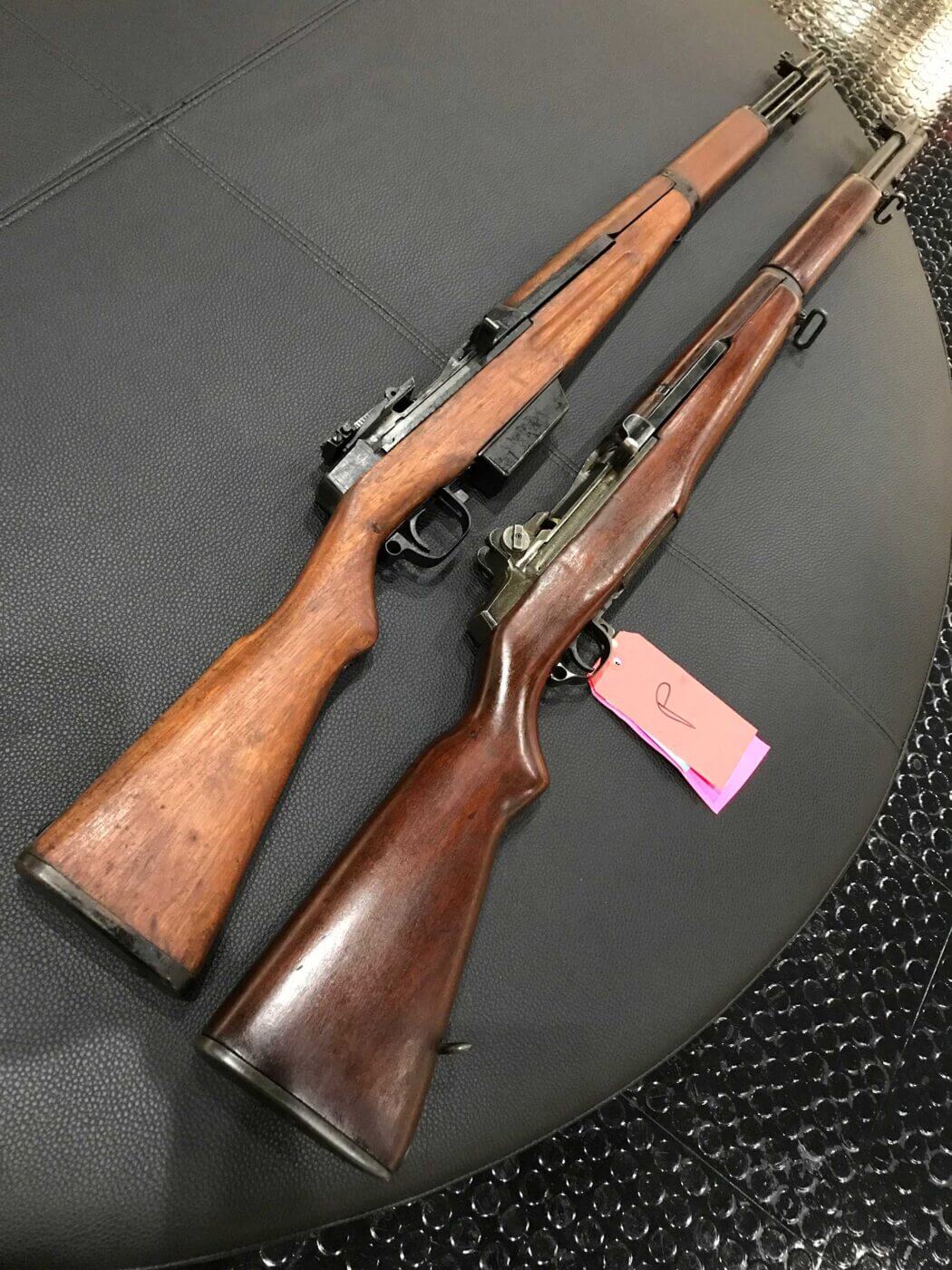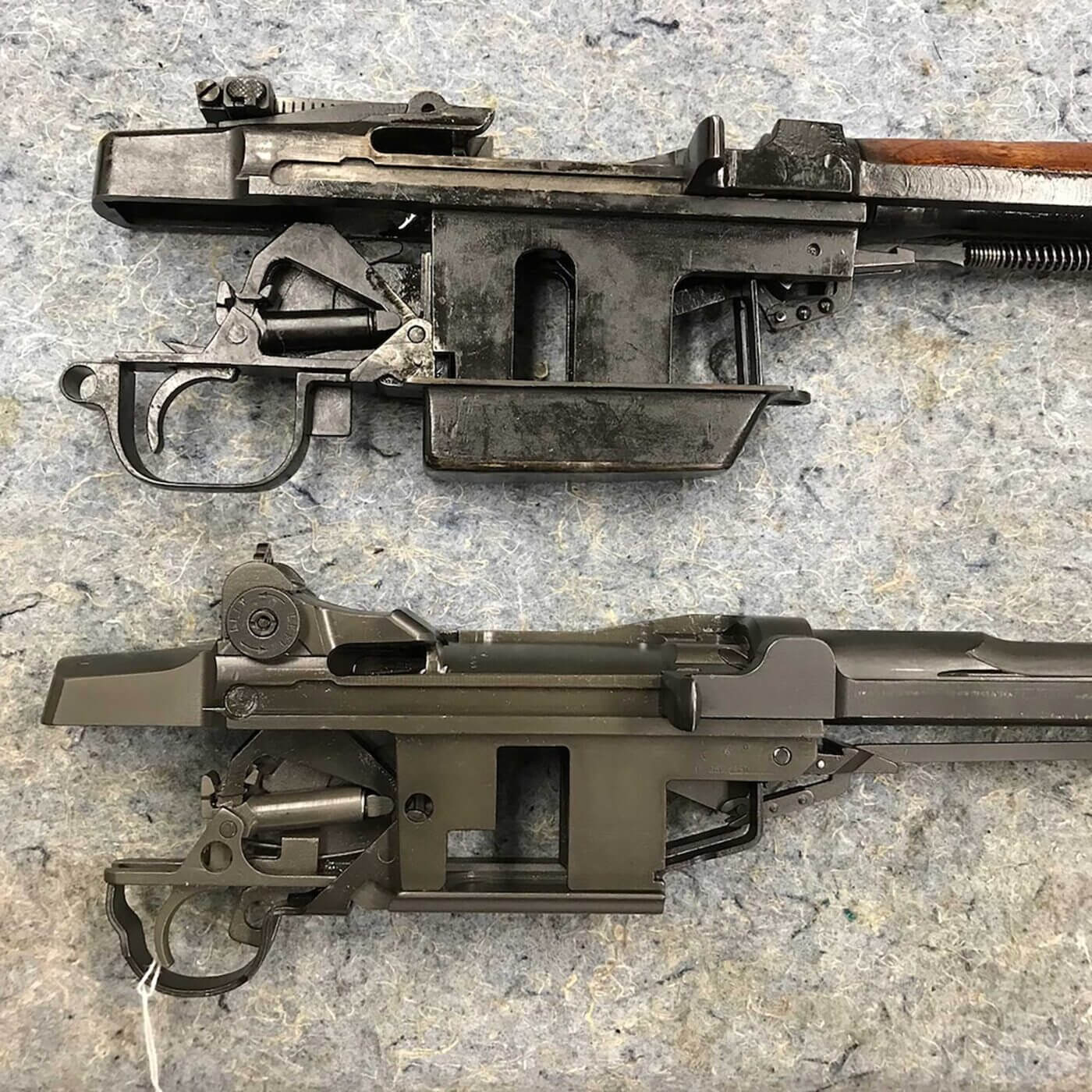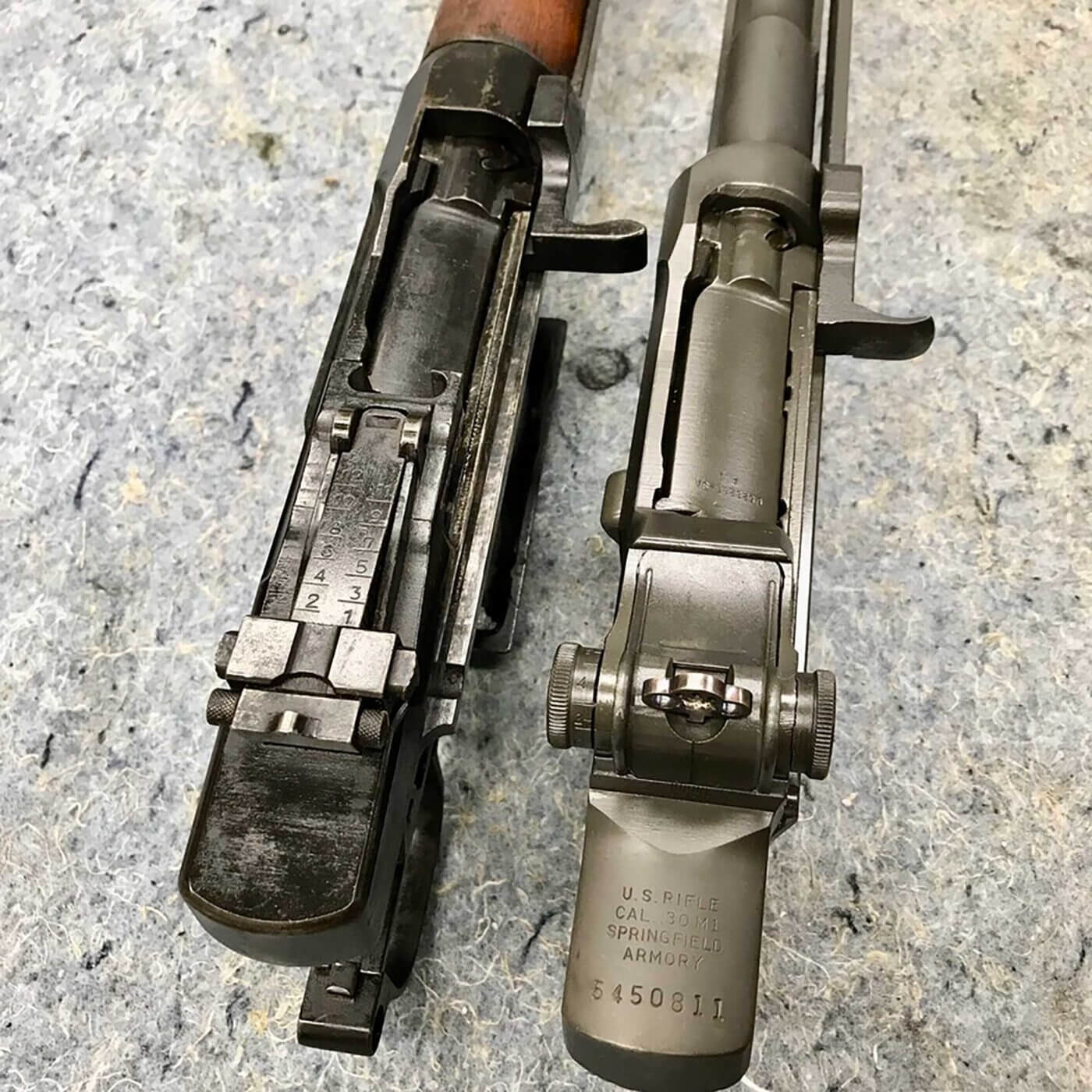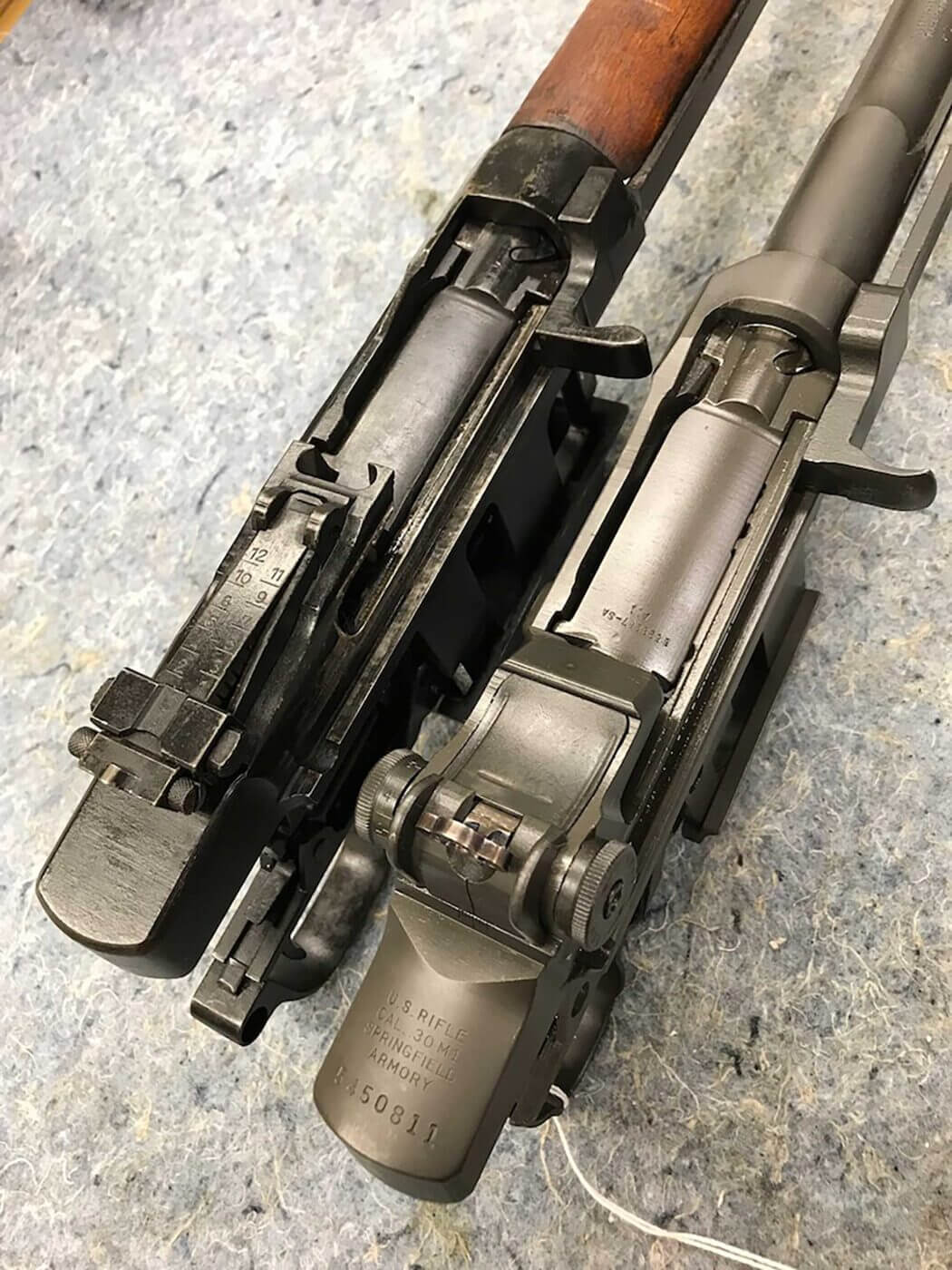
The Japanese Attempt To Copy The M1 Garand
The main U.S. service rifle during World War II, the M1 Garand, earned notoriety not only from the nation that produced it and the soldiers that used it, but from those who faced it as well. The Japanese were no exception to this, as they tested and evaluated captured M1 rifles themselves during the war. They even went so far as to adapt John Garand’s design in the final two years of the war. This is the story of Japan’s attempt to make their own semi-automatic rifle, and how they tried to copy the M1 to give their infantry a more even footing against the superior U.S. forces they faced.

A Real Need
Japan, like many other nations during the interwar period of the 1920s to 1930s, saw the potential value of developing and adopting a semi-automatic service rifle. The machine gun reigned supreme during World War I, and it became evident that the infantry’s ability to slug out greater fire superiority than the opponent would only bolster the chances of success.
The problem was that the heavy machine guns of the era were not as mobile as the foot soldier, and the bolt-action rifles in common use couldn’t match the volume of suppressing fire. Inserting a semi-automatic rifle into the mix would allow infantrymen to support themselves with faster follow-up shots and greater volume without having to rely on the limitations of heavy machine guns.

First Attempts
The Japanese self-loading rifle program began in 1931 with the Japanese Army requesting a design from General Kijiro Nambu along with a new light machine gun design. During this time the United States and Great Britain were also testing semi-automatic rifles in their own trials, and the Japanese were watching closely.
One design that stuck out to the Japanese in particular was the toggle-lock actioned rifle from designer John Pedersen. Pedersen visited Japan during this period with his rifle and the Japanese gave it special attention, believing it would be the design that the two Western powers would adopt. Two private companies, Nippon Special Steel and Tokyo Gas and Electric, were contracted to develop their own adaptations of the Pedersen design while the Japanese Army developed its own through the Koishikawa Arsenal.

Tests on these prototype semi-auto rifles continued until July 1937 and Japan’s entry into war on the Chinese mainland. With Japan at war and the prospective costs of fielding a new rifle, the Japanese cancelled the trials altogether without a winning design being selected. The Japanese would go on to fight with their Arisaka bolt-action rifles (to learn more about that rifle, click here).
Another Take
By the beginning of 1944, Japan’s situation in the Pacific became more dire as the U.S. pushed closer to the home islands. Japanese designers turned their attention to copying the M1 Garand. At first the Japanese experimented with the M1 Garand rechambered to their 7.7x58mm cartridge, which is dimensionally similar to .30-06.

They found that the M1 could fire the 7.7mm, but encountered feeding issues as a result of the en-bloc clip feeding system. As a result, the en-bloc clip was deleted from their design in favor of a 10-round internal magazine fed by two Arisaka five round stripper clips. This new Japanese adaptation of the M1 was called the Type 4 rifle, but also known as the Type 5, and manufacturing shops for it were set up at the Yokosuka Naval Arsenal in Tokyo Bay.

The Type 4 was intended for mass production by 1945. Some 250 parts sets for these rifles had been produced with little more than 100 rifles completed by the time that Japan surrendered in September 1945. After the war, Allied personal discovered the parts and assembled rifles at Yokosuka Naval Arsenal.

Twenty of these rifles were taken for study or as trophies, with few making their way into the United States and fewer still on display to the public today. Little is known about the performance of the Type 4 other than reported reliability issues — there were no known cases of the rifles being used in combat. Internally and externally, the Type 4 is very similar to the M1 from which it was copied.
Close, but No Cigar
The most notable differences between the Type 4 and the M1 are external in regards to the sights, stock and magazine bottom, along with the inclusion of a stripper feed to the receiver. The sights on the Type 4 are tangent style instead of the knob and peep system found on the M1, though these sights do use a very small peep aperture.

The stock and handguards of the Type 4 follow similar principles to the M1, but with their own style. The front handguard is a single piece of wood, without the venting cut for the gas system on the bottom. The rear handguard lacks the spring clip that is found on the M1 counterpart. The main stock is made of two sections of glued wood at the butt much like their existing rifles, with Arisaka type sling swivels mounted to the left side instead of the bottom.
The stock also features finger grooves, a tanged buttplate similar to the Arisaka, and reinforcing tangs on the bottom and top around the action, magazine and trigger to hold everything together. Interestingly enough, the Japanese copied the tilting triggerguard design of the M1 for disassembly, except the trigger housing and stock cannot be removed from the receiver until the screws on the reinforcing tangs are removed. The most prominent feature of the Type 4 from the M1 is the protruding magazine bottom that was extended to allow for 10 rounds.

Internally the Type 4 is very similar to the M1 with only minor differences, with the most notable being the reshaped follower and cruder construction. When I attempted to take one completely apart, I found it difficult to undo the gas-plug at the muzzle, in order to take off the gas block and handguards, so I stopped there. The build quality on the example I handled was very rough, as is to be expected from the resource-starved Japanese industry at that late stage of the war. All metal parts have black paint applied on top of the metal.

Conclusion
These rifles are largely forgotten today, and one can only wonder if they would have been used against U.S. forces in number had the Japanese not surrendered and Operation Downfall, the planned U.S. invasion of the Japanese home islands, commenced in November 1945 and dragged the war on into 1946. And, if they had, would they have made a difference?

